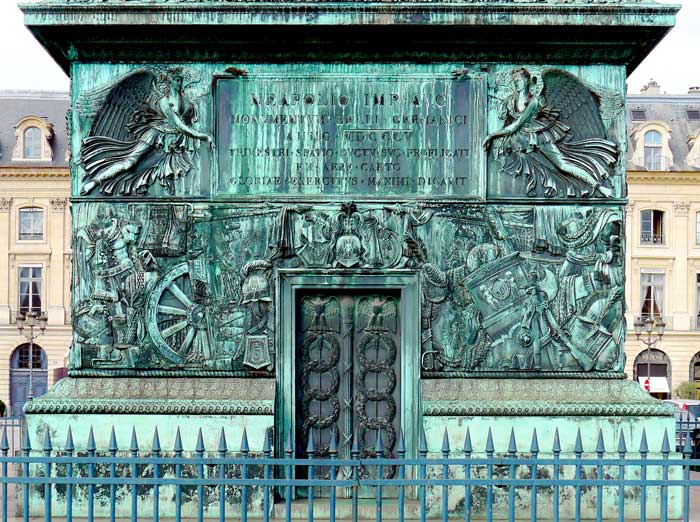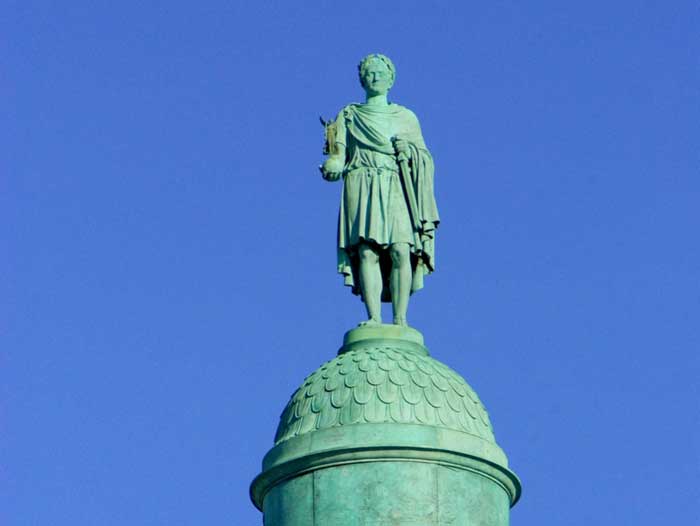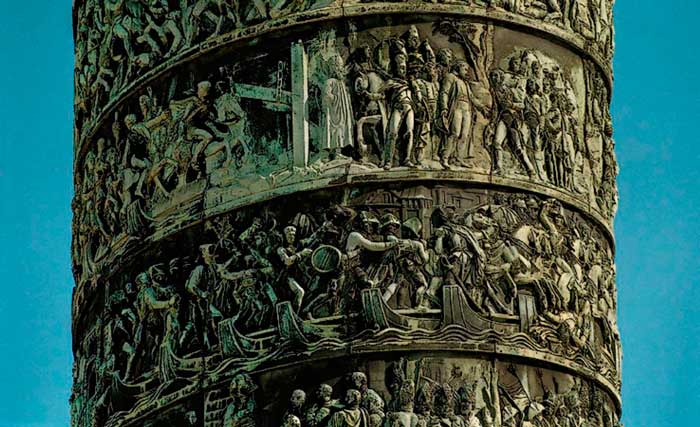
Located to the north of the Tuileries Gardens and east of the La Madeleine Roman Catholic Church, Place Vendôme is a square in Paris and the original Vendôme Column was installed at the centre of the square. Modelled after the Trajan’s Column, the Roman triumphal column in Rome, construction of Vendôme Column was started in 1806 at the instance of Napoleon, to celebrate the victory of Austerlitz in the Austrian Empire, when French Grande Armee defeated the combined Austrian and Russian army led by Holy Roman Emperor Francis II and Tsar Alexander I. It was In fact, one of the most important and the most decisive engagements of the Napoleonic Wars.
The construction of the original Vendôme column started in 1806 and was completed in 1810. The height of the hollow bronze column, with an inner staircase leading to the top, is about 145 feet (44.3 m) and its average diameter is 11.8 feet (3.60 m). It is said that the bronze plates covering the outer surface of the column, were made of the 1200 cannons confiscated from the combined Russian and Austrian army. However, the historians believe that the figure is highly exaggerated and nothing more than 180 cannons was captured. The top of the original column had a statue of Napoleon, dressed as a Roman Emperor and crowned with laurels, holding a sword in his right hand and a terrestrial globe topped with a statue of winged-Victory in his left hand.

The cubic base of the Vendôme column is made of Corsican granite. Like the Trajan’s Column in Rome, the Parisian Vendôme Column also features a spiralling bas-relief on 425 bronze plates, designed by the sculptor Pierre-Nolasque and executed by a team of expert sculptors. The 721.78 feet (220 m) long relief depicts the complete Austerlitz campaign, right from the Boulogne Camp to the return of Napoleon and his victorious army to Paris on January 27, 1806. The reliefs also depict a pile of trophies, cannons, weapons, flags and uniforms of the Austrian army.
The statue at the top of the column was replaced time and again, at each change of political regime. After the Bourbon Restoration, following the fall of Napoleon, the statue of Napoleon was pulled down and melted down to provide the bronze for the recast equestrian statue of Henry IV, which was placed on the top of the column on 3 April 1814. After the July Revolution of 1830, the top of the column hosted a new statue of Napoleon on 28 July 1833, dressed in a frock-coat and wearing a cocked-hat, sculpted by Charles Emile Seurre. Later, on 4th November 1863, a statue similar to the first one, with Napoleon dressed as Caesar and wearing a laurel wreath, found its way to the top of the column, by order of Napoleon III.

In 1871, during the Paris Commune, Gustave Courbet, a painter, an elected member of the Commune and the President of the Federation of Artists, proposed to dismantle the column, as it is devoid of all artistic value, symbolizes the Imperial dynasty and perpetuate an anti republican sentiment. Consequently, legislation was passed on 12 April 1871, to dismantle the column. Before it was dismantled on 16 May, its bronze plates were removed and with the help of a series of ropes and quarry workers, the statue was pulled and it grounded with a huge thud, on the heap of sand prepared for it. The column broke up almost before it reached its bed, and lay on the ground, a huge mass of ruin, covered with immense dust and smoke from the crumpled stones.


However, good sense prevailed after the fall of the radical socialist and revolutionary government of the Paris Commune, when the decision was taken to rebuild the column with the statue of Napoleon restored on its top. The French painter was condemned for his role and was sentenced to pay the costs of rebuilding the monument. As he was not in a position to pay that huge sum of money, Courbet went into self-imposed exile in Switzerland and died there in December 1877. Nevertheless, the column was re-erected at the center of Place Vendôme in 1874, with a copy of the original statue on the top.

In recent times, the column underwent restoration work in 2015,under the patronage of the Ritz Hotel. Unfortunately, the inner staircase leading to the top is no longer open to the public.